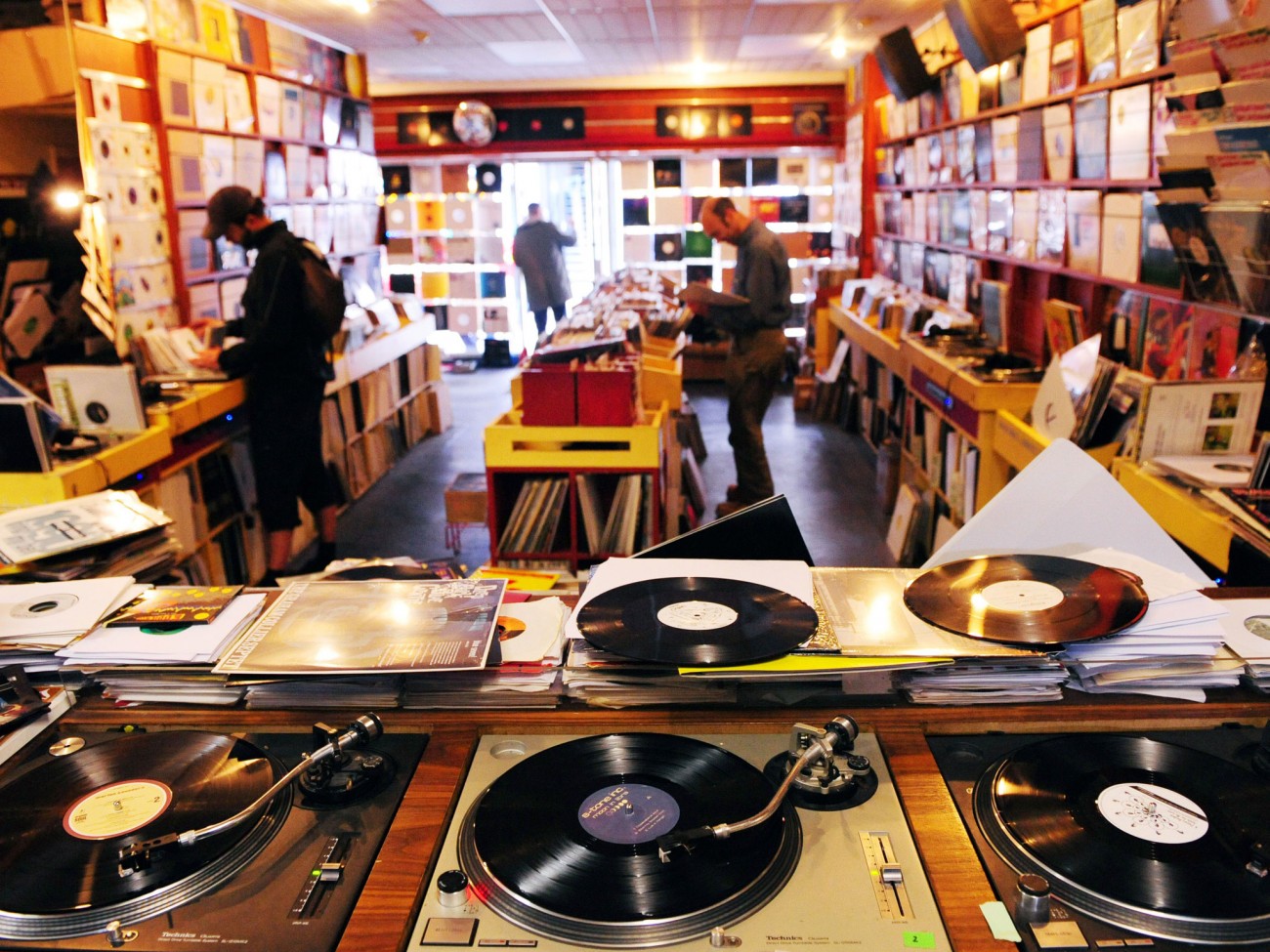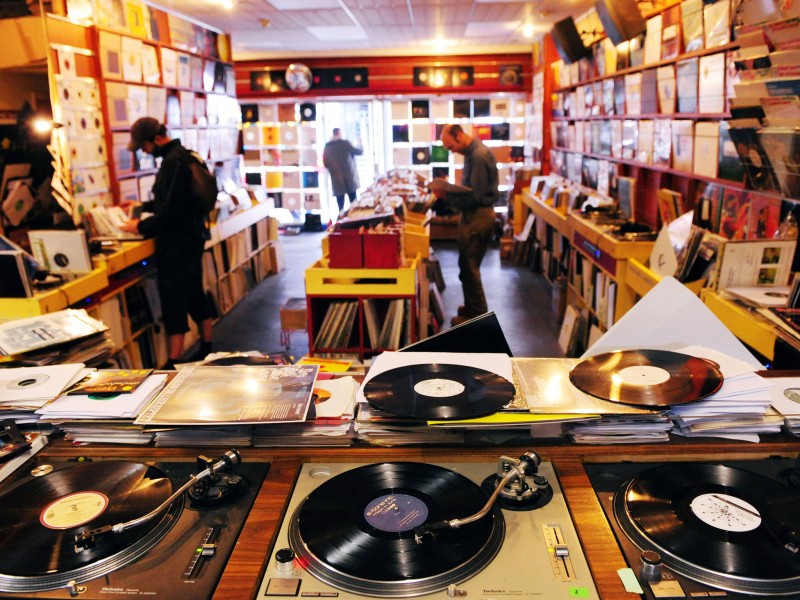A Sound Odyssey – Music Distribution and Media, from the Beginning to Now
(By Oliver Cox)
What can we learn from the music industry of the past to make the future industry connect more artists with the fans that are longing to hear their music?
Let’s sit down for a brief history lesson on the music industry and music distribution. We want to find out how the huge, powerful and almost too complex music distribution system of today originated, and where it’s heading.
We’re going to take big bites, and big jumps: that means tech fanatics who’ll notice that I miss out the 8-track tape, or LP lovers who know that their format is the future might be upset. To each their own, indeed, but I’m here to tell you about something new.
Vinyl, Tape, CD and Music Stores
Records started impacting the music industry in the late 19th century, but it was only after the development of vinyl as a durable source of entertainment to send to troops during WWII that solid music formats came into their ascendancy. Until the early 80s, vinyl, at varying playing speeds, was the dominant format.
The only way people could access such music was to go to a music store or to order from a catalogue. This was a different world: imagine – as an individual of the 21st century with almost limitless access to music online – having to go to the music store and ‘trial’ a new record in order to get a free listen outside of your friend’s house or a radio broadcast.
Before the Internet, a network of record stores made physical media available to paying customers. There may well have been a hip character in one such store whom you knew would point you to great bands or artists.
According to Recording Industry Association of America figures on the American market, vinyl singles hit their zenith with 228 million units sold in 1973, and LP/EPs hit their peak of 341.3 million in 1978. Meanwhile, cassette tape album sales hovered around 300 million units throughout the 1980s.
In 1982, Phillips introduced the world to the CD: Billy Joel’s 52nd Street, released first in Japan, according to PBS. This format was immensely successful, exceeding vinyl’s sales peak by 1992.
In the same year, the Moving Picture Experts Group publicly released the MPEG-1, Layer-3 Audio standard – in other words, MP3 was born, though it would take years before it really shook up the market. In 1995, Real Audio became the first music streaming service. Duran Duran made waves by releasing their 1997 song Electric Barbarella online and in stores – this wasn’t the first song to be available online, but it’s the most famous, not least due to how much it annoyed retailers.
Then came Amazon – the online seller began with books in 1995, and soon diversified into CDs and other media. American customers bought more than 900 million CDs at the format’s peak in 2000.
So, just before the turn of the century, the music customer could access what was the most diverse music market to date: choosing between music stores, catalogues, online sellers, CDs, tapes, vinyls, and even the emerging mp3 format. But this wouldn’t last.
Digital Disruption
You’ve all heard of Napster, or at least will have seen Sean Parker in The Social Network, right? In 1999, Parker, Shawn Fanning and others set up their peer-to-peer file-sharing network, and were, soon afterwards, sued by Metallica and Dr Dre for distributing their tracks to a wide audience without paying artists. They turned off the service in 2001, and agreed to pay a total of $36 million in owed royalties. At its height, Napster had 20 million users.
Ethics aside, it’s fundamental to illustrate how it must have felt, living in a pre-Napster world, to be presented with such a system. Cyber Guru Alex Winter described this experience in an interview with the Guardian. Seeing a world of music, all available from the comfort of his home, almost instantly, was ‘like that famous shot from 2001: A Space Odyssey, when the prehistoric monkey throws a bone in the air and it turns into a spaceship.’
Now customers wanted music on those terms, but it had to be done ethically: enter Apple. In 2003, Apple released iTunes, selling MP3s for around $0.99. Finally users could get easy access to their favorite music instantly, without breaking copyright. iTunes sold 70 million such tracks in its first year of operation. Today, many online services follow this model, like BeatPort and Amazon, while streaming has a new popularity through services like Spotify and Deezer.
In 2007, Alexander Ljung and Eric Wahlforss launched the innovative free streaming service, SoundCloud, which is now the preeminent platform through which rising stars and giants publicize their music and build an audience.
Now it’s 2015, let’s survey the landscape. iTunes had 25 billion tracks available in 2013, according to CNN. Meanwhile, the WSJ reports how musicians upload around 12 hours’ worth of audio every minute to SoundCloud.
For every listener, there’s a eureka-artist out there, the artist that they’ve been waiting to hear for years; for every artist there’s a eureka-listener, one who will love, purchase and be an evangelist for their music. But, with those numbers, there’s just too much music for these two people to find eachother that often: enter Soundudes.
Curated Content is the System for Now
You may have heard of Beats Music, which, as Digital Music News reports, has a team of high-profile taste makers that curate the music, allowing the system to recommend tracks that listeners will really want to hear. Soundudes is a system for artists on SoundCloud, to help them find their audience in much the same way.
The algorithm that powers Soundudes gathers huge volumes of data from SoundCloud, to find out what people like and discover which users are helping great artists to make it big. With a few details from you, the Soundudes system can work out which users you need to follow in order to grow your audience, big time.
The latest paradigm of curated content brings back the record-store dude, the Soundude, to direct you to an audience that is guaranteed to like your sound. At a time where there is, paradoxically, too much music, this system brings distribution back to basics and to the future at the same time.
This represents another Napster moment, except ethically. Soundudes’ algorithm brings together fans and artists so that a eureka doesn’t happen just once a month, it can happen as often as you make it happen with the quality of your musical creations.


